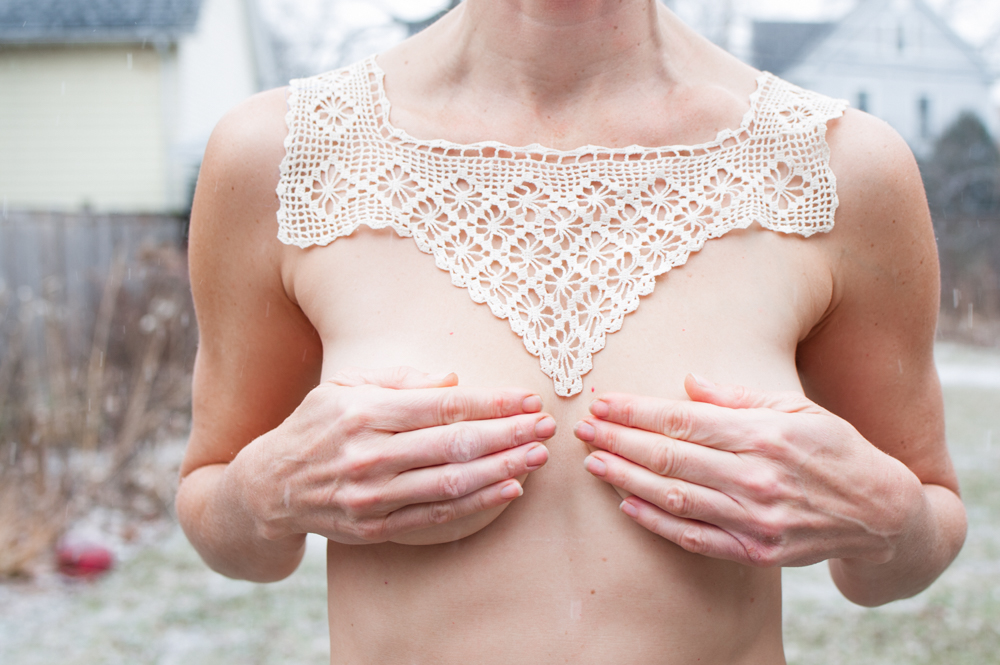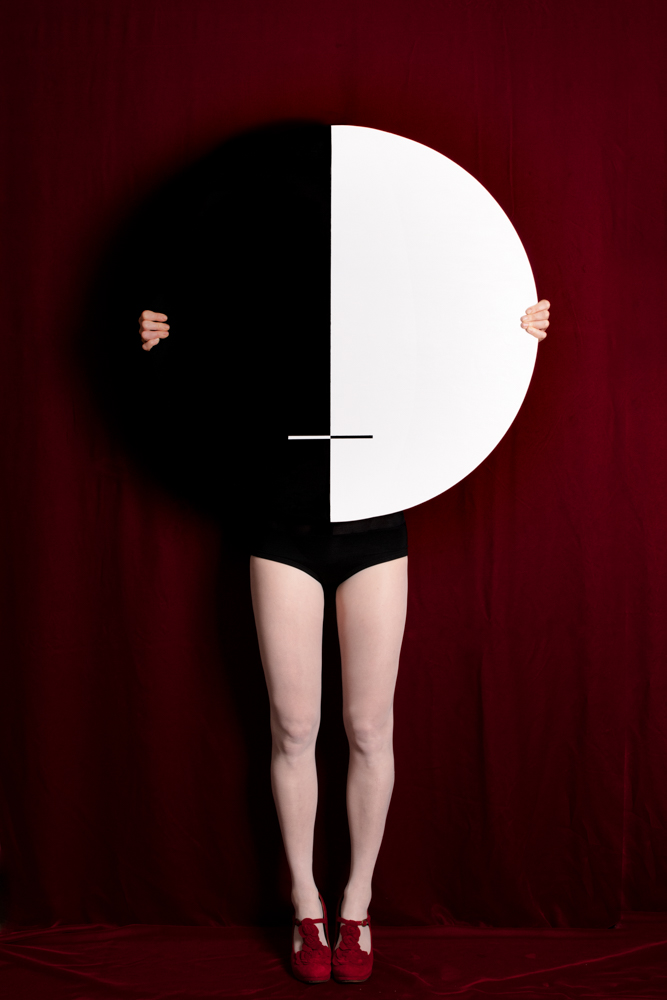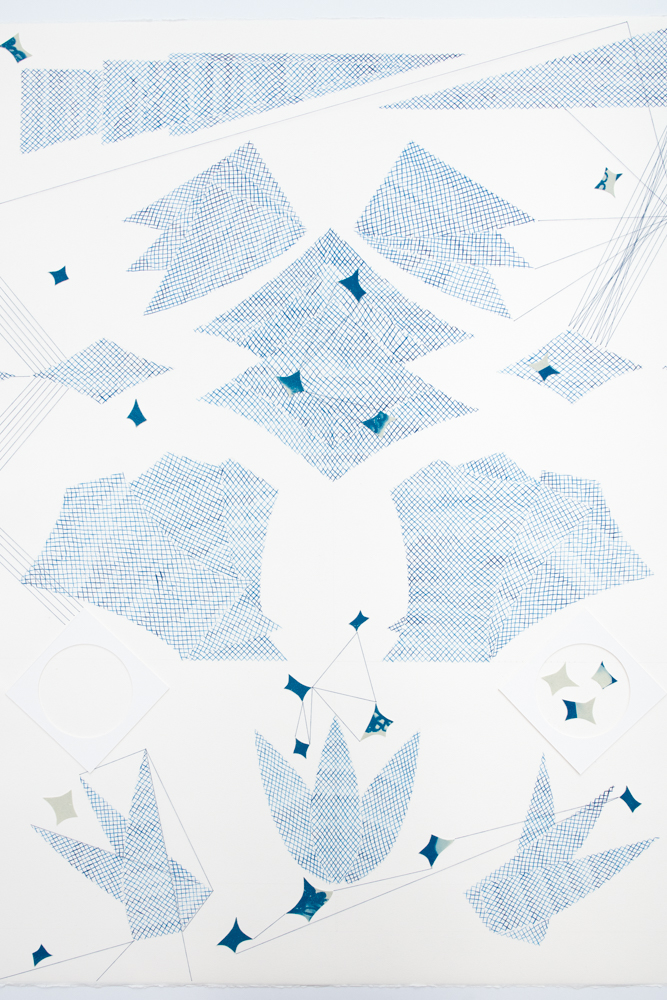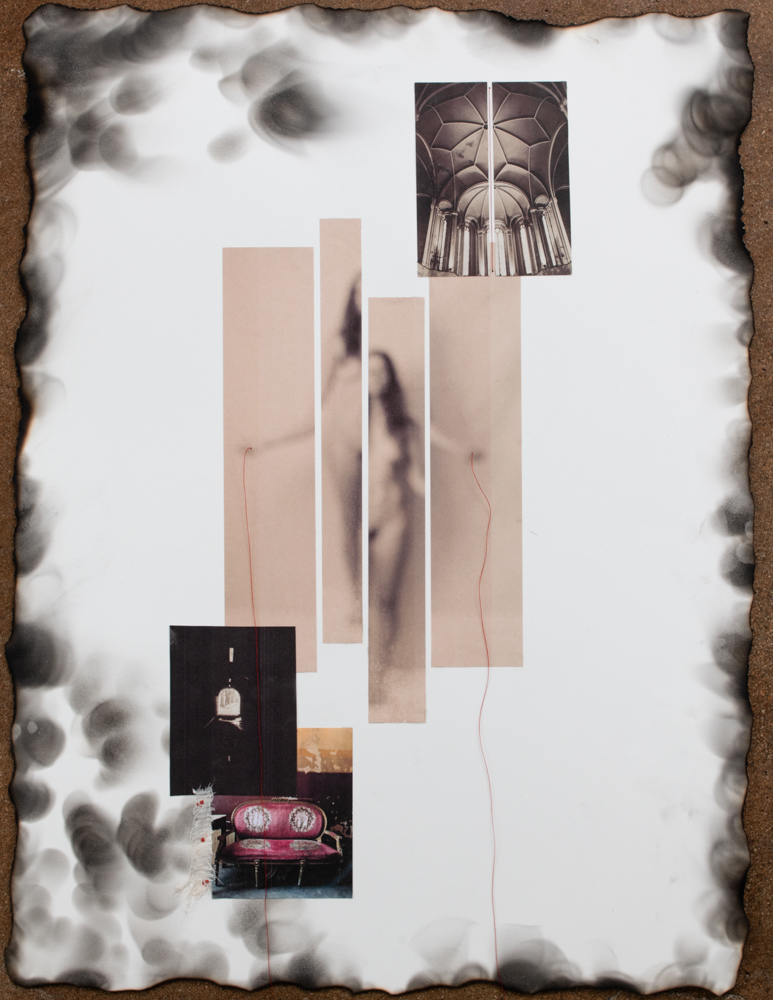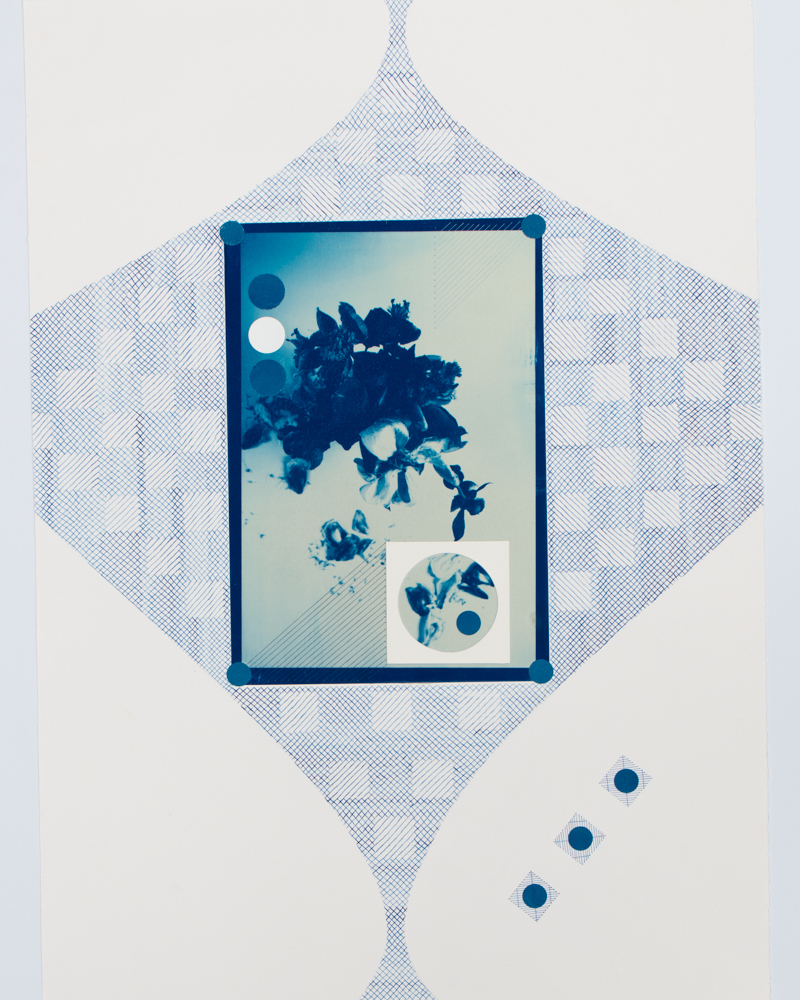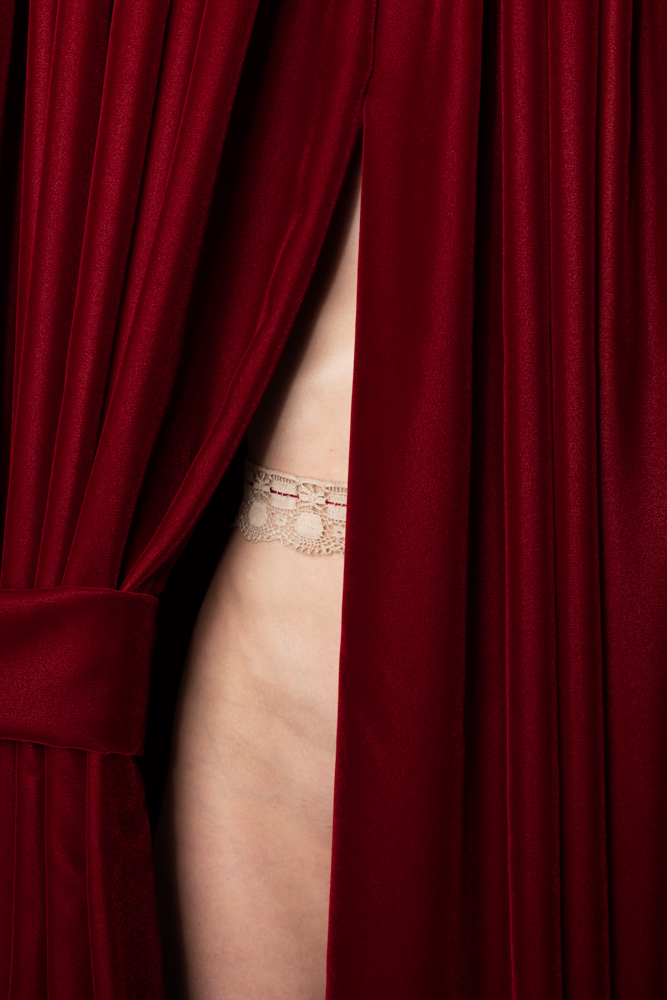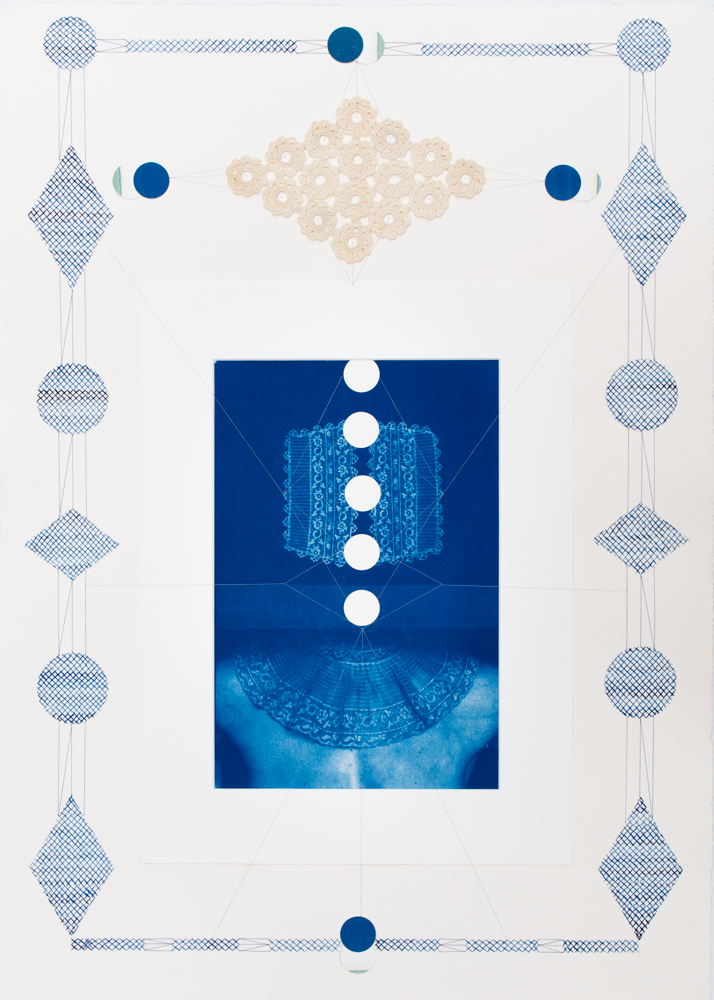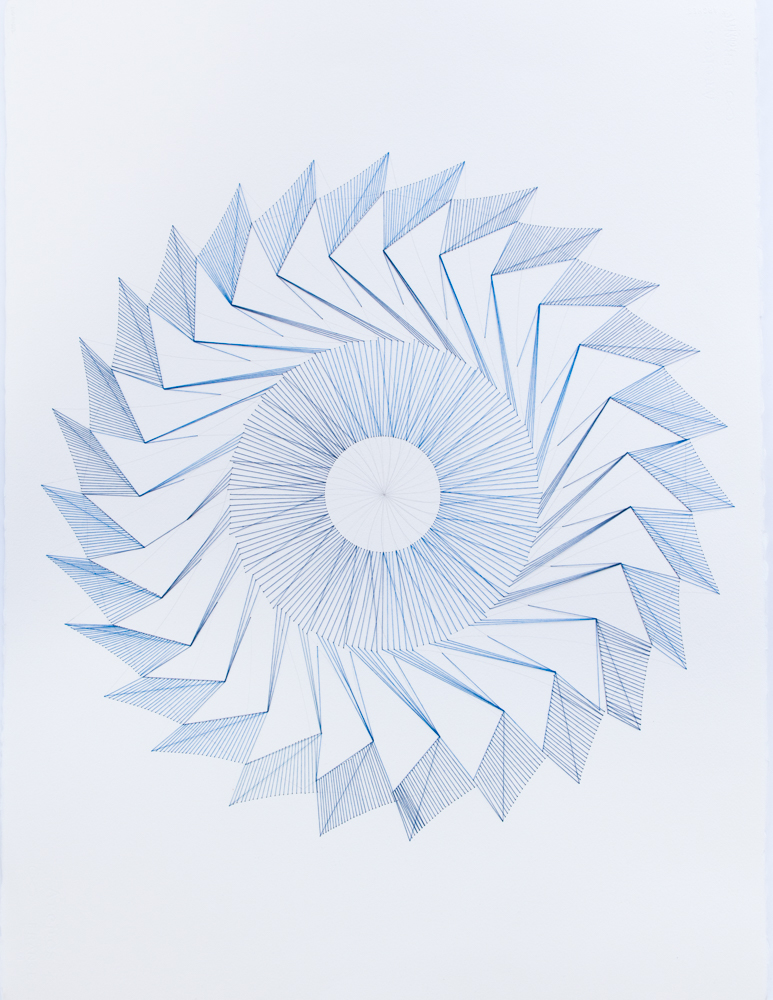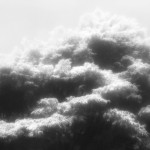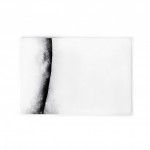Photography + Form Week: Vanessa Filley
Photography is my first love, but at times I feel that it falls flat for me (how ironic) and I seek out other ways that may tell the story more effectively. While researching for my own photo based projects, I often come across the work of others who push the medium far into new corners through the use of textiles, thread and sculptural elements or any combination thereof. Due to the saturation of images, it seems that some artists have been less inclined to use photography as a language but rather as a form to recreate objects such as textiles, 3-dimensions or a combination of both. The artists featured this week are all inspired by imagery or choose to create sculptural elements with in their imagery to create a layered investigation of their worlds. – Maggie Meiners
I have long been an admirer of Vanessa Filley’s work. From her early photographs of domestic life and space to using blue transparencies in her photos to comment on the line between public and private spaces, she never fails to impress me in both process and form. It was the transition from straight photography to using paints, thread and textiles that really intrigued me to dig further into her process. She is one of the most unique artists I am familiar with at the moment and her practice is growing daily through her conversation with materials, photos and form.
Vanessa Filley is a mixed media artist who lives and works in Evanston, IL. She is interested in the energetic threads that orient and connect us, ground us in place and time yet tether us to our ancestral past and future, the lines that bring us home. Her work ranges from large scale sculptural installations to tiny embroidery pieces to poems, photographs, and drawings in watercolor, pinprick and thread. Filley was voted one of Photolucida’s Top 50 in 2018 and has shown work nationally and internationally including the Sonoma County Museum of Art, Berlin Photography Week, the Lishui International Photography Festival, FOCUS Photo LA, Stricoff Gallery, Galerie Joseph Turene, Western Michigan University, The Nashville Public Library and the US Consulate General in Saudi Arabia.
Follow Vanessa Filley on Instagram: @vanessafilley
Homing Maps: A Study in Wayfinding
An Infinite Expansion
It is the sky just before sunrise On this winters morning where Dusky rose golds meet
Shifting blues of heaven and sea
This is where we begin Again
To take what is fractured and refracted
And hold the mirror anew To see how light bounces off Into a spectrum
We might not yet perceive
The astral lies between and before us and
From these earthen hues we grasp at colored fire
Not to unweave the rainbow
Marking space between each spectral color
But finding the tapestry “where all colors are one thing seen in different states of motion” Where the lines of our bodies
Seen as certain separation
Are the least of all things
This trick of light might reveal we are merely particles of dust floating one moment
And earthbound matter weighted by wild grief the next
This is the flux of sussing
From beauty to base and back again
An infinite space of ask
Where we might breathe in the peace of unknown things
It is the sky just before sunrise.
Punctum
This project began while wandering the streets of Berlin, absorbing the history of the city and thinking about the lives that could have been had Hitler not gained power, how all that was taken away, denied, destroyed, in some way still remains. And everyday this worldly loss and destruction continues. The ether of lives cut short threads through geography, informing the lives of those who are here now, imbuing us with a responsibility to bring unlived memories to life. We are each punctured by the past and the present and perhaps it is our greatest gift that we can feel in the here and now for that is what changes us and will change the world.
We live in a world where everyday, if we allow the weight of the world in, there is the possibility of puncture. There is so much anguish to absorb, but also so much beauty. How do we live in such a way that we acknowledge the pain and suffering in the world, work to make the world a better place and find and create a space for a loving world to exist? By opening ourselves emotionally, by making ourselves vulnerable, we allow for the possibility of connection and transformation where individual growth begins a chain reaction that can be passed from one person to the next. By allowing our hearts to be squeezed, broken open, to live for a moment inside this space of amplified being, on the raw edge of life, we allow the beauty and pain of the world in, grasp at the possibility of our greater unity. Through the experiences that puncture us we find identification with others, a certain energy harnessed, captured and transferred.
Transformations
There are places made of time where the frayed edges of past & present lap over themselves. If we collect and codify fragments of the gone by, might it still live, coming together, where and when we inhale slowly. In any given epoch we don’t quite know our geologic impact, the residual imprint on deep time until that time, sealed up, has come to pass. What lapses as the moon waxes, sliver to crescent to half, full then wanes. When we look back at what’s faded from memory, the rock, a certain sediment, we might glimpse the residue of crust and stone, a marker of our being. A moment taken to observe before time turns onward.
I am captivated by the passage of time and the nature of opposing forces. This project began as a consideration of the impact of our actions, I wondered if and how opposing viewpoints could find a middle ground, a way of hearing one another and relating. In looking at the landscape of our nation and world we increasingly insulate and isolate ourselves from those who do not share our views or version of reality and this feels dangerous for the future, a future in which we will need to increasingly come together to solve dire problems with otherwise calamitous outcomes.
Growing up wandering the streets of New York City I learned my way around based on the grid of city blocks, using the numerical sequence and nearly consistent form of each block as a guide. 20 blocks running north-south equalled a mile, each east-west block was approximately equivalent to 3 north-south blocks. In order to know a place I’ve always felt I had to walk it, whether in the wilderness or an urban landscape. As I walk, I absorb what is around me hoping to be able to find my way, to relate, to home. If I visit a place and am unable to walk through it, I feel as if I haven’t been there, as if it remains unknown. To move is to know, to feel a part of something.
A couple of years ago I had the opportunity to participate in an artist residency in Berlin. I spent days walking the streets, trying to find my way into the history of the city, while also trying to find my way to where I was staying, again to home. There was a moment almost a week into my stay when I began to be able to orient without the assistance of a map, to find myself miles away from my bed and able to walk to it as if lured. The city’s map had begun to become my internal compass. Historically many animals are known to be able to find their way home, to be pulled by magnetic force or gauge their place based on polarized light, echolocation and infrasound. You can blindfold a bird, cover its nostrils, cover its ears and more often than not, it will still manage to find its way home. This ability to navigate fascinates me, this ability to make sense of space and time, to understand its complexities infinitely intrigues me. During the aforementioned residency, I became transfixed by increasingly abstract work. It became a way to see or understand on a different plane, to work through without the weight of the literal and yet to embody all of the thoughts, feelings, insight and emotion of living without the obvious reveal. It became a language that captured my attention, a new form of exchange. When I returned home I found my work shot through with a new form of urgency and figuring. Months later I found myself at the Guggenheims Hilma Af Klint show, deeply compelled by the transformatively spiritual plane of her work, the boldness of her expression through abstraction.
Similarly, the art work of Lenore Tawney compels me. Two years ago I encountered one of her line drawings done in 1964 shortly after her first encounter with the Jacquard Loom, an enchanted machine known for allowing the creation of increasingly complex patterns. She created these drawings on grided paper, in which the complexity of the drawing slowly revealed itself through the act of progress to completion. Almost in an act of meditation she layered one line upon the next, not knowing how exactly the completed form would appear.
I too am drawn to this meditative act of webbed complexity. To laying down a foundation and filling in the blanks in hopes of making sense of things, drawing a conclusion, finding a way. As all of our lives shifted radically in March of 2020 I moved from making photographs as my primary practice to breaking them down. I began cutting up photographs and using the cut fragments as the foundational forms to base my drawings on, to find a new way. I repeated these forms over and over drawing them in pencil, watercolors, thread and pinpricks.
Pricking paper with pins felt like a way to create something from nothing, to erect form from space. A pinhole camera captures whole worlds through a prick in the surface and I thought maybe all of these pricks were images not being made, experiences not being had, something captured and connected at a standstill.
But so to these drawings are webs of connection, swarms, a manifestation of collective and collected energies. A way to find the kindred. Like mycellium, the underground hyphal network of interconnected strands that comprise a sort of ecological connective tissue, they are homing maps. Mycelial homing occurs when fungal hyphae’s threadlike tendrils branch and fuse reaching out toward a new part of itself and glomming on in an act of growth and expansion. Through connection the mycelium increases in size to form complex networks, ever attracting one thread to the next. Mycelial networks are in constant communication with themselves, pulsing chemical signals surge across the network allowing the organism to engage in complex trading relationships; to knead away at stores of nutrients in the soil, to convey messages about injury and conditions, and to hunt or fend off attackers. This notion of decentralized and moving intelligence has drawn me in. The possibility that intelligence comes, not from a centralized brain, but that it is stored throughout a structure as a complex network of neurons flexibly remodeling itself, that in the act of connecting and growing, of linking up, the capacity of the network expands, adjusts, almost understands. That’s kind of amazing.
I am drawn to think how we as humans have the capacity to be in such union, communion, to communicate and act in similar ways to mycelium, to home, to work together on behalf of a greater good, to find a new way, sometimes without words or what we think of as typical intelligent communication. We too are an intertwined organism passing signals, bacteria, viruses and sloughed off cells between one another, reliant on the pulse of others actions to propel the human experiment forward, and yet we are interrupted by the forces of our perceived individuality, subtracting ourselves from the responsibility of a larger equation. As we pulse through the world, alone we are perhaps just a jumble of threads, but in concert with others those threads extend to weave an ever evolving and dissolving pattern, to find and make a certain form of home. To make sense.
This work is my effort to make sense. To take the slow road of absorbing all that surrounds, to let it sink in, connect and reach back to link to the larger possibility of our webbed intersecting communion.
Maggie Meiners (b.1972, Chicago) Maggie Meiners is an interdisciplinary artist whose work revolves around self-critique. Heavily influenced by image culture and how it personally affects her, Meiners deftly deploys photography, stock imagery, film stills, cultural artifacts and magazines to tackle subjects such as identity, gender, and social status. Using appropriation, assemblage, film making and installations, Meiners explores the psychological affects of popular imagery on her psyche.
Her interests lie in deconstructing the current cultural narrative as a way of empowerment and defining her personal identity. The internal conflicts that manifest from the constant barrage of the media as well as societal expectations (both self-imposed and external) within the current social construct are also represented in her work. Using these varied modes and mediums, Meiners’ work highlights feminism and contemporary notions of gender, domesticity, beauty, consumption, and body image. Humor and subversive messaging in Meiners’ work is relayed as an abundance of bright, often lurid colors and textures in jarring, frenetic, and imperfectly arranged pieces. Such arrangements evoke the essence of simultaneous desire and absurdity, a psychological manifestation of our culture of perfection and truth.
Maggie’s art has been widely exhibited and remains in the permanent collections of the Illinois Institute of Art, Wheaton College, Harrison Street Lofts, Fragomen, Del Rey, Bernsen & Loewy, LLP and numerous private collections. In addition, her work was on loan at the American Embassy in Uruguay from 2016-2019. Maggie had her first solo exhibition in 2005 at The Union League Club of Chicago– one of the most esteemed private collectors of art in the country and is represented by the Anne Loucks Gallery in Glencoe IL.
Follow Meiners on Instagram: @MaggieMeinersProjects
Posts on Lenscratch may not be reproduced without the permission of the Lenscratch staff and the photographer.
Recommended
-
Earth Week: Casey Lance Brown: KudzillaApril 25th, 2024
-
Earth Month: Photographers on Photographers, Dennis DeHart in conversation with Laura PlagemanApril 16th, 2024
-
Luther Price: New Utopia and Light Fracture Presented by VSW PressApril 7th, 2024
-
Artists of Türkiye: Eren SulamaciMarch 27th, 2024
-
European Week: Sayuri IchidaMarch 8th, 2024

